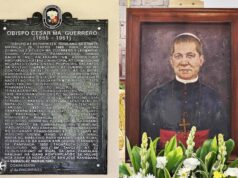CLARK FREEPORT – The reality of climate change as well as the rising cost of electricity has brought up an upgraded sun-powered (solar) technology which generates electricity that is now being introduced in the Philippines by a Filipino-American-owned enterprise.
The somewhat new technology promises to substantially reduce the current high price of local electricity that averages P10-P13 per kilowatt-hour (KWH) for residential rates based on Meralco’s tariffs.
“With our hybrid solar power generator (solgen), the cost of electricity could easily drop to a stable P6.50 per kilowatt in 20 years 24/7 from the start of a generator’s operation,” according to Ray Horspool, president of DACC Global Phils., an affiliate of the US-based DACC Global.
Solgen is operated by the sun’s energy harnessed by high-efficiency solar panels, the reason for the resulting cheap cost of generated electricity, he said during the media forum “Balitaan” organized by the Capampangan in Media, Inc. (CAMI) in cooperation with the Clark Development Corp. (CDC) and the Social Security System (SSS) at the Bale Balita here last Friday.
The American executive also said sun energy as a power source is not subject to any tax like the 12 percent value added tax (VAT) imposed on imported fossil fuel (diesel and coal) that runs most local power generating plants and the reason why Philippine electricity is the fifth most expensive in the world.
Unlike other solar power generating technology, Horspool said their product does not require a big area as it only uses land space that’s one percent smaller than the standard solar farm and comes in units that can generate electricity from five-thru-100 kilowatt per unit.
DACC Global is offering its product via a 20-year lease arrangement or build-operate- transfer (BOT) scheme.
Charges could also be based on the electricity produced by the generator and consumed by the client. “What this means,” Horspool explained, “is that what we’re actually selling to clients is the electricity produced by our generators, the generating cost which averages P6.50 per kilowatt.”
Included in this per kilowatt generating cost estimate are the costs of financing (in case a client is dependent on loans for operations), land acquisition or use and other capital expenditures required by any business venture.
Among its target clients are utility grade power plants, micro- grid, power distributors, like electric cooperatives, and even commercial and industrial establishments that heavily use electric power. Horspool said his group is capable of putting up and operating a system capable of generating up to 500 megawatts (mw) in 90 days, provided all the required equipment are already on-site.
The local DACC Global affiliate has initiated talks with local government units and electric cooperatives that have shown interests in tapping the “solgen” technology in the face of the projected worsening of power shortages next year, according to Horspool and his business partner Riza Lim of Orissa Wellness Garden.
At present many areas in Mindanao and in the Visayas and even in Luzon are experiencing regular power supply interruption due to technical glitzes and other problems that mainly stem from the rising demand that the country’s aging power plants could not meet.
Data sourced from the CIA World Factbooks show that in 2011, Philippine electric production reached 69.18 billion kwh as against consumption of 61.5 billion kwh (646.96 per person), leaving a spare capacity of only 7 billion kwh.
A separate study on the Philippine energy profile prepared by the World Bank showed that electric power consumption in the country in 2009 stood at 54.22 billion kwh. DACC Global is headed by Doug Melvin, president of DACC Associates, a 25- year old enterprise providing a range of security services for the U.S. and foreign governments, private corporations, and the United Nations.
Melvin has served in senior security positions for the Executive Office of President, U.S. State Department, and the Department of Homeland Security. He was credited with developing and implementing the emergency response procedures that allowed for the successful evacuation of White House staff during the September 11, 2001 terrorist attacks and for which Melvin received a Distinguished Service Award from President Bush.



